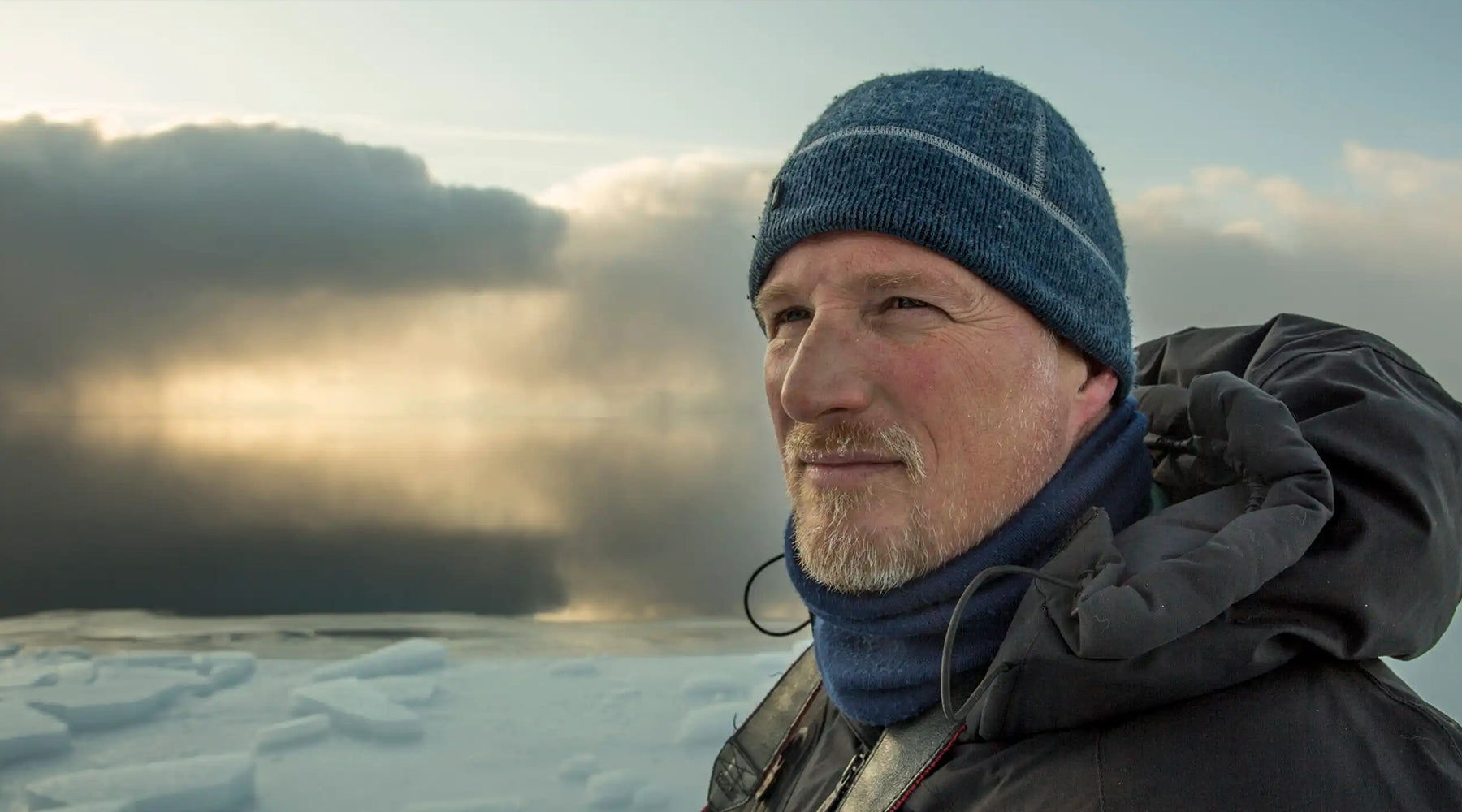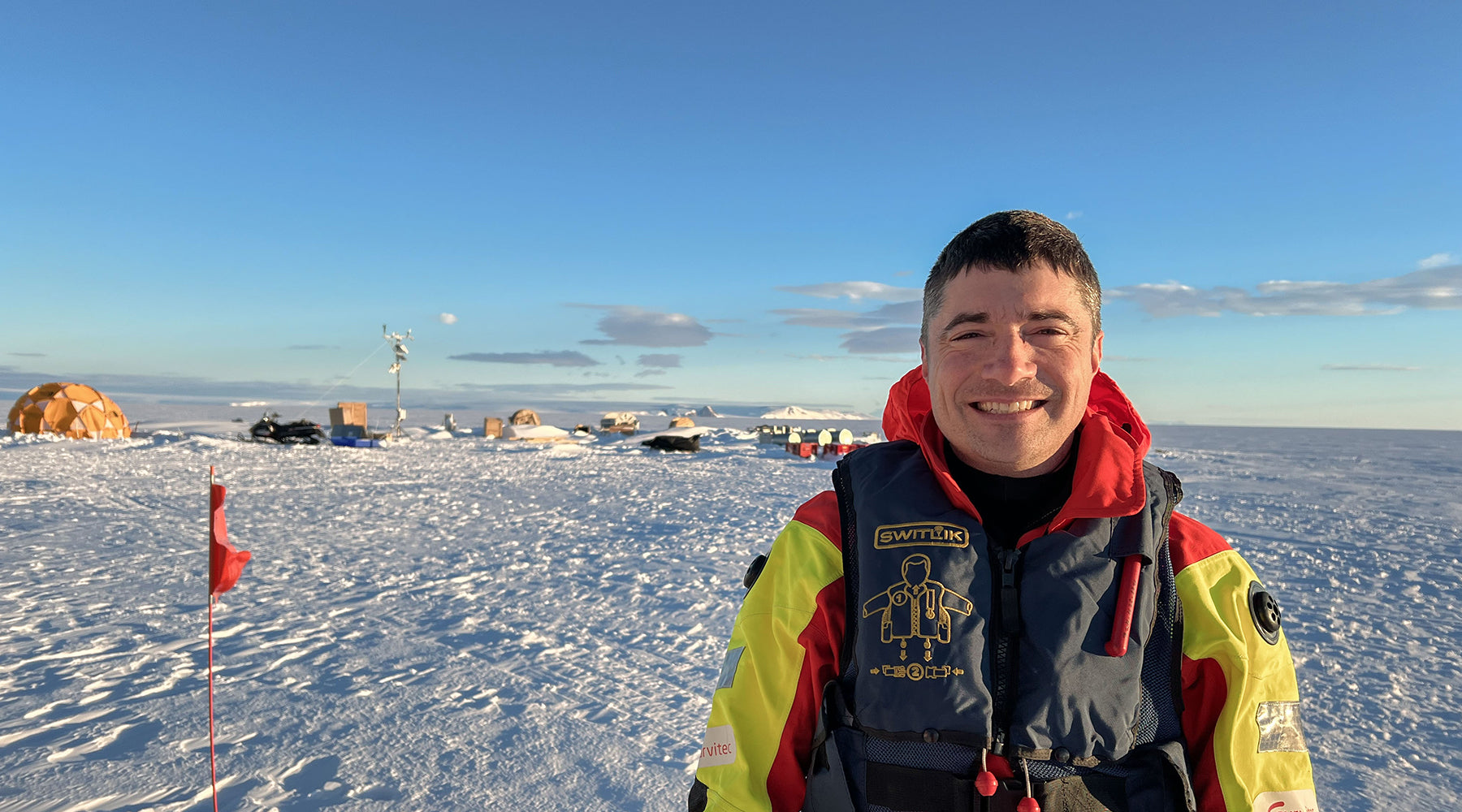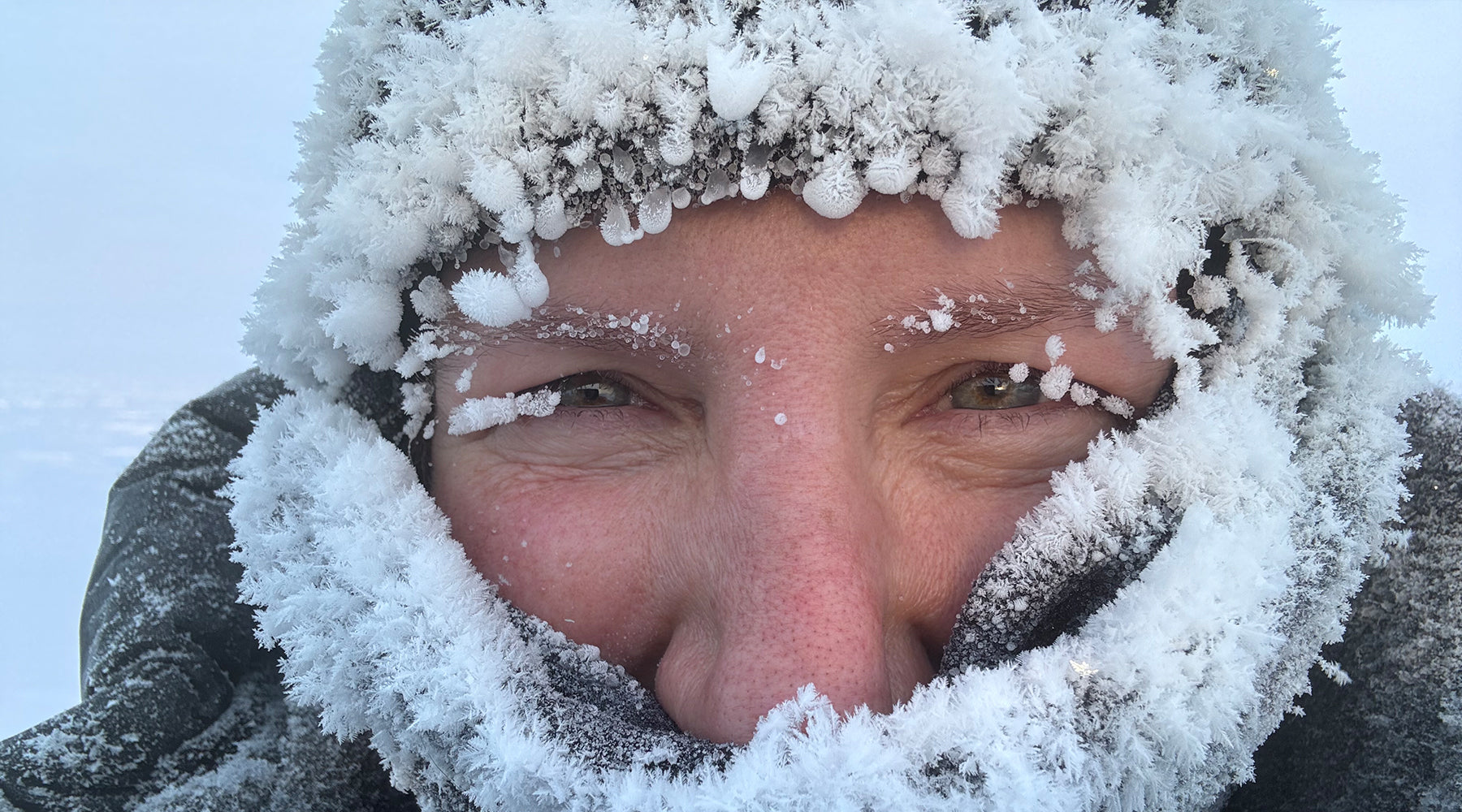
SHACKLETON MEDAL 2025: MEET THE SHORTLIST - PAUL NICKLEN
Conservationist, Marine-Biologist and Photographer.
Co-founder of SeaLegacy, Nicklen continues to use breathtaking imagery to shift public perception of the ocean’s importance. His exhibition Reverence and the global storytelling initiative 100 For The Ocean are inspiring audiences to act.
You are famous for your courage in getting photos of the natural world that inspire people to action. Can you describe a couple of images that define your work and say how you got them?
Many moments stand out when I think about the images that define my career—not just as a photographer, but as a storyteller and witness. I will share four that have had a significant impact.

Ice Waterfall, taken in Svalbard, Norway, of the Nordauslandet Ice Cap. I was documenting glacial melt pouring off the ice sheet like the pulse of a dying giant. It was stunning, but also devastating. This image is a powerful reminder that beauty and collapse can coexist in the same frame and opens a dialogue at the intersection of art, science and conservation. This image has been published in many publications as a reminder that the polar regions are warming twice as fast as anywhere else on Earth.

Face to Face was taken during an expedition to Svalbard in 2008. I was riding out a blizzard in a small wooden hut when I noticed a shape moving outside the window—a female polar bear framed by snow, peering in with quiet curiosity. At first, I was thrilled, as I always am in the presence of polar bears. But my excitement turned to concern when I realized our snowmobiles had caught her attention—specifically, their leather seats. In a move that, in hindsight, feels almost absurd, I opened the window to distract her, but then, there was nothing between us—just a few feet of frigid air and the understanding that this was a moment I needed to capture. As she stood there, calm and composed, I realized this was more than a close encounter. It was a chance to reframe how we see these animals—not as threats but as fellow inhabitants of a changing world. As sea ice disappears, polar bears are forced closer to human settlements in search of food. Too often, these meetings end in fear and tragedy. But this one didn't. With my camera ready and no proper lighting, I improvised: I lit an old oil lamp by the window, and when that wasn't enough, I held up my laptop with a blank white screen to illuminate her face. The result was better than I ever expected—and the image remains my favourite. It's a portrait not just of a polar bear but of possibility: that we can share space, that these encounters can be peaceful, and that compassion can coexist with wildness.

My series on leopard seals was incredibly impactful. I was working on a story about top predators in the Southern Ocean for National Geographic and diving in Antarctica when a massive female seal swam directly toward me. I was nervous—this was one of the most fearsome predators on the planet. But instead of aggression, she began to feed me. She brought me penguins—live ones at first, and then when she saw I could not feed on them, she began to get me dead ones. She was trying to teach me to hunt. That interaction, caught in a series of photos, changed how many around the world thought about these animals. It showed me that connection and intelligence run deeper in the wild than we often admit. And that sometimes, the story you think you're telling isn't nearly as powerful as the one unfolding right in front of you.

Gathering of Unicorns - After spending years on the sea ice trying to photograph narwhals, I finally came back with images that gave people a window into their secret world. These are animals most will never see in their lifetime, and I wanted to show how beautiful and mysterious they are and how vulnerable they are. What many didn't realize at the time was that narwhals were being hunted and their ivory tusks sold through a loophole in the commercial trade. When the story ran in National Geographic, the public response was immediate. It created enough pressure that the Canadian government moved to ban the export of narwhal ivory. That was the moment I saw how a single story—told truthfully, powerfully—could lead to real policy change. It reminded me why I do this work.
What do you believe your greatest achievement has been in the last year?
One of the accomplishments I'm most proud of is the work we've done and will continue to do, supporting Dos Mares—a proposed marine biosphere reserve in Baja California Sur. Through SeaLegacy, and in collaboration with an incredible network of partners—from artisanal fishers to government leaders and scientists—we've helped accelerate the momentum behind expanding marine protections in one of the planet's richest and most vital ocean ecosystems. The two seas surrounding Baja are home to over a third of the world's cetaceans, and our visual storytelling—footage, photography, and community engagement—has played a key role in showing what's at stake. This is more than conservation; it's about building a future where biodiversity thrives and coastal communities are empowered.
I’ve also been working to protect blue whales from the growing threat of ship strikes. Blue whales are the largest animals to have ever lived on Earth—creatures once hunted to the brink of extinction are now slowly making a fragile comeback. But just as they begin to recover, they're facing a new and insidious danger: fast-moving ship traffic in their feeding and migration corridors. Through SeaLegacy and in close collaboration with The Whale Guardians and longtime conservationist Michael Fishbach, we've been using our storytelling tools—film, photography, and data-driven media—to raise awareness and advocate for critical changes in maritime behaviour.
Describe a moment from your time in the Arctic that sums up why you love it.
My love for the Arctic runs deeper than any single moment. It began in 1972 when my family moved from the prairies of Saskatchewan to Iqaluit—then called Frobisher Bay—on Baffin Island. I was just a young boy, and suddenly, I was immersed in an entirely different world. Later, we moved to Kimmirut, a tiny Inuit community of about 200 people. We had no phone, no television, not even radio. What we had was the land and sea ice. I spent my days outside—hunting, fishing, travelling across the ice—and absorbing a culture rich in storytelling, resilience, and connection to place.
After leaving my job as a polar biologist, I got dropped off alone in the middle of the barren lands in the high arctic to live alone with the bears, wolves and muskoxen. There, I had plenty of time to think and knew that my life’s mission was to put a face and a name to the polar species being affected the most from a changing climate.
Years later, when I spent five years trying to photograph narwhals in the high Arctic for National Geographic, it felt like all of that early experience came rushing back in a moment that I describe as pivotal. I taught myself to fly, landing my small plane on drifting pans of sea ice. I would ride my snowmobile across open leads of freezing water, sometimes over 3,000 feet deep, just to get from one floe to another. I spent days out there—sometimes accidentally drifting out to sea, only to be brought back to another ice floe. It tested my artistry but most of all, it tested my survival skills.
That experience brought everything full circle for me. It reminded me that the Arctic isn’t just a place—it’s a part of who I am. It’s where I learned how to survive, how to tell stories, how to listen. Out on the ice, in the quiet between storms, I remembered exactly why I fell in love with this wild, raw, astonishing place. And I knew I would spend the rest of my life fighting to protect it.
The Arctic is at a tipping point. What action do you think people should be taking right now?
The Arctic must serve as the canary in the coal mine for the rest of the planet. What's happening there is not abstract or distant—it's a full-scale alarm bell ringing in real-time. For the first time in recorded history, we're watching the entire Greenland ice cap melt at a massive rate. We've hit the lowest sea ice extent on record. Multi-year ice—once the backbone of Arctic stability—is almost completely gone. These are not just numbers. They are the early chapters of a collapse.
We cannot afford to see the melting Arctic as a business opportunity. This should not be a chance to open new shipping routes or drill for oil. It's a warning that ecosystems are unravelling, that species like the polar bear are disappearing before our eyes. And yet, I've seen how fast things can change when enough people care. This isn't just about individual choices—this is about who we vote into office, the policies we demand, and the systems we hold accountable.
What are your plans for the next year?
The year ahead is shaping up to be one of the most ambitious chapters of my life, both in terms of exploration and impact. I'll be heading back to Antarctica—a place that continues to pull at my heart—where we're documenting the changing ice and its cascading effects on global ecosystems. At the same time, SeaLegacy and I are deep in projects across Indonesia, tackling the devastating plastic pollution crisis and the bleaching of coral reefs. It's brutal to witness, but it's also where I feel my images can make a real difference—bringing light to places that most people will never see.
In addition, I'm also working across Africa, raising crucial funds for the reintroduction of rhinos in Kenya and helping protect the survivors—those elephants and rhinos still threatened by poaching.
This life has never just been about taking pictures—it's about taking risks, pushing into the unknown, and living a life of purpose. Whether it's dodging icebergs in Antarctica, drifting over reefs in Indonesia, or riding alongside rangers in Africa, I carry one mission: to tell stories that move people to protect this planet before it's too late.
By Rachel Halliburton


